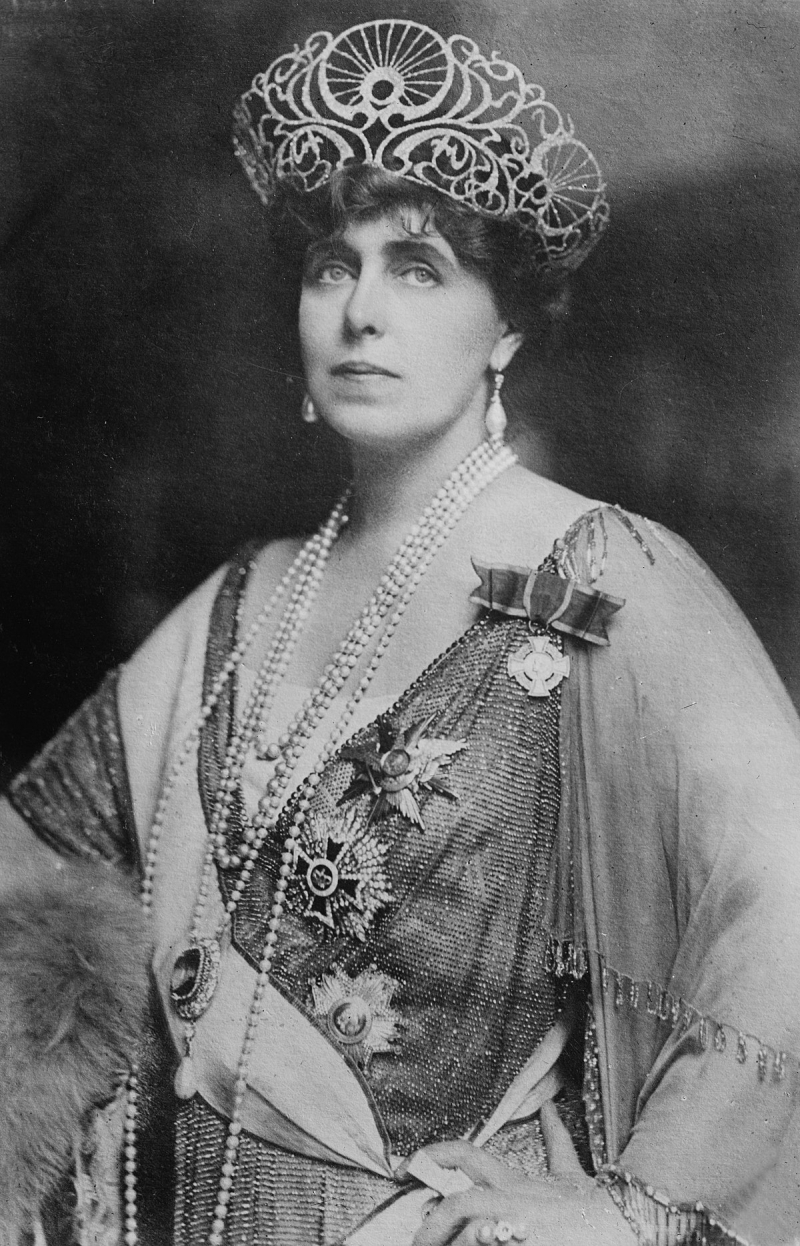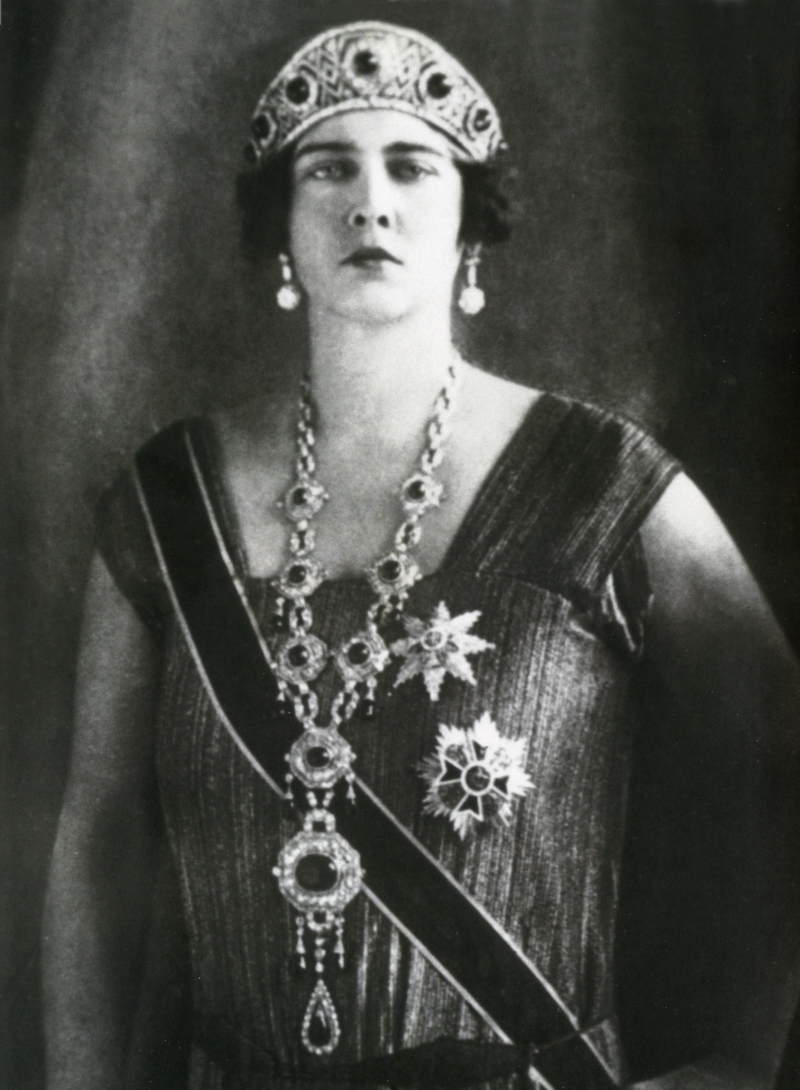Marie of Romania
Marie of Romania (born Princess Marie Alexandra Victoria of Edinburgh; 29 October 1875 - 18 July 1938) was Romania's last Queen as King Ferdinand I's wife.
Marie was born into the royal family of the United Kingdom. Prince Alfred, Duke of Edinburgh (later Duke of Saxe-Coburg and Gotha) and Grand Duchess Maria Alexandrovna of Russia were her parents. Marie spent her childhood in Kent, Malta, and Coburg. In 1892, she was chosen as the future wife of Crown Prince Ferdinand of Romania, the heir apparent of King Carol I, after rejecting a proposal from her cousin, the future King George V. Between 1893 and 1914, Marie was Crown Princess, and she quickly became popular among Romanians.
After World War I broke out, Marie urged Ferdinand to join the Triple Entente and declare war on Germany, which he did in 1916. During the early stages of the fighting, the Central Powers occupied Bucharest, and Marie, Ferdinand, and their five children sought refuge in Western Moldavia. She and her three daughters worked as nurses in military hospitals, caring for soldiers who had been injured or infected with cholera. Following Bessarabia and Bukovina, the historical region of Transylvania united with the Old Kingdom on December 1, 1918. Marie, now Queen of Greater Romania, attended the 1919 Paris Peace Conference and advocated for international recognition of the expanded Romania. In 1922, she and Ferdinand were crowned in an elaborate ceremony in a specially built cathedral in the ancient city of Alba Iulia, mirroring their status as queen and king of a united state.
Marie was a popular queen both in Romania and abroad. She and two of her children went on a diplomatic tour of the United States in 1926. They were warmly welcomed by the people and visited several cities before returning to Romania. Marie discovered Ferdinand was gravely ill, and he died a few months later. Marie, now queen dowager, refused to serve on the regency council that ruled the country during the minority of her grandson, King Michael. In 1930, Marie's eldest son Carol, who had waived his succession rights, deposed his father and usurped the throne, becoming King Carol II. He tried to demolish Marie's popularity by removing her from the political scene. As a result, Marie left Bucharest and spent the rest of her life in the countryside or at Balchik Palace, her summer home in Southern Dobruja by the Black Sea. She was diagnosed with cirrhosis in 1937 and died the following year.
Following Romania's transition to a People's Republic, communist officials condemned the monarchy. Several royal family biographies portrayed Marie as a drunk or a promiscuous woman, referring to her numerous alleged affairs and orgies she allegedly organized before and during the war. Marie's popularity returned in the years leading up to the Romanian Revolution of 1989, and she was presented to the populace as a model of patriotism. Marie is best known for her work as a nurse, but she also wrote extensively, including her critically acclaimed autobiography.










